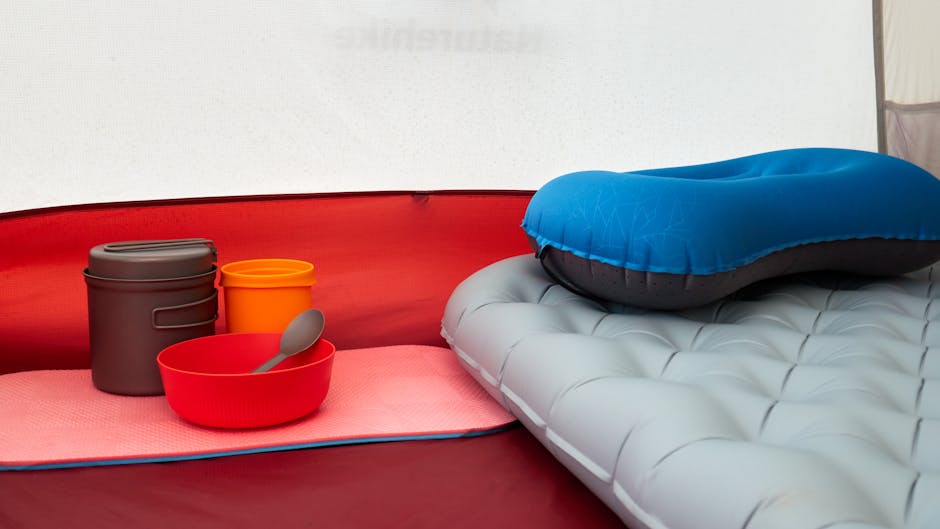Understand the Core Differences
Choosing between ultralight and traditional gear begins with understanding how the two compare in terms of performance, design, and user experience. Below is a breakdown of the critical differences to help you make a more informed decision.
Weight & Bulk
Ultralight Gear: Prioritizes trimming down both weight and physical size. Many ultralight setups remove non essential features in exchange for ounces, sometimes reducing pack weight by pounds overall.
Traditional Gear: Typically built with comfort and convenience in mind. This means more padding, larger compartments, and sturdier materials at the cost of extra weight and bulk.
Takeaway: If pack weight is your top concern, ultralight wins. If you prioritize comfort and ease, traditional gear may be the better pick.
Durability & Material
Traditional Gear: Uses heavier duty materials like thick nylon, reinforced seams, and robust zippers. These choices improve longevity and performance in rugged conditions.
Ultralight Gear: Made with advanced, lighter materials such as Dyneema or silnylon. While impressive for weight savings, they may sacrifice some resistance to wear and tear.
Consider This: Ultralight fabrics can last a long time with proper care, but they’re more prone to punctures and abrasions, especially in heavily wooded or rocky areas.
Cost Comparison
Ultralight Gear: Often more expensive up front due to premium materials and specialized construction methods.
Traditional Gear: Generally more affordable, widely available, and suitable for those assembling their kit on a budget.
Budget Tip: If you’re new to backpacking, starting with traditional gear can help you discover your ideal setup before investing in high end ultralight alternatives.
Comfort & Function
Traditional Setups: Focus on user comfort thicker padding, ergonomic frames, multiple access pockets, and added features like rain covers or integrated hydration systems.
Ultralight Setups: Strip it all down to the essentials. Expect a minimalist approach with fewer pockets, more manual adjustments, and a tighter fit.
What Matters Most: Some hikers thrive with barebones gear; others prefer creature comforts. Match your gear style to your personal comfort threshold and the nature of your trips.
Understanding these core categories is crucial in making a decision that aligns with your hiking style, experience, and goals. There’s no ‘one size fits all’ answer just the gear that best fits your priorities.
Who Benefits from Ultralight Gear
Ultralight gear isn’t for everyone but for the right crowd, it’s a game changer.
Long distance hikers on trails like the Pacific Crest Trail (PCT) or Continental Divide Trail (CDT) are notorious for cutting every unnecessary ounce. When you’re hiking thousands of miles, shaving a pound off your pack can make the difference between finishing strong or tapping out early. Ultralight gear helps them move faster, recover better, and reduce strain over time.
Advanced backpackers also lean ultralight not because they have to, but because they know what they can live without. They’ve done the miles, tested gear in the field, and now they want efficiency. It’s about stripping things down to the essentials and staying nimble over big miles.
For minimalists, it’s a philosophy. These hikers value simplicity, not just in gear but in the experience. They ditch the gadgets, pocket organizers, and plush extras to focus on raw wilderness miles with zero fluff.
Then there are the travelers dealing with brutal airline weight limits. When every gram counts going through international airports or budget carriers, ultralight gear means you’re not sacrificing your setup just to make luggage requirements. It’s the smart way to stay mobile without paying out the nose for extra baggage.
Ultralight isn’t just for show. It’s a mindset built around movement, simplicity, and intent.
When Traditional Gear Still Wins

Ultralight might be trendy, but it’s not ideal for everyone or every trip. Beginners, for one, usually do better with traditional gear. It’s more forgiving wider sleeping pads, sturdy tents, packs that don’t cut into your shoulders. When you’re still figuring out your system, comfort and margin for error matter more than saving 2 pounds.
In rugged or unpredictable terrain, traditional gear also pulls ahead. Thicker materials and reinforced seams can take a beating from sharp rocks, brush, or surprise weather shifts. Ultralight setups are great until they rip halfway through a route.
Cold weather trips? Don’t mess around. Traditional gear tends to include more insulation and warmth, which can be the difference between a challenging night and a hypothermic one. Pulling out an ultralight quilt in a snowstorm is a mistake you only make once.
Finally, group treks are worth mentioning. When you’re splitting up items like tents, cook gear, or first aid individual pack weight becomes less critical. That gives you room to bring more solid, reliable gear the group can depend on.
Whether it’s your first multi day hike or a deep winter expedition, there are scenarios where traditional gear stacks up as the smarter choice.
How to Decide What’s Right for You
Trip Duration: Ultralight gear shines on short trips in stable weather. If you’re out for just a weekend and the skies are behaving, traveling light adds freedom without much compromise. On longer treks especially in remote or storm prone areas traditional gear pulls ahead. It’s often more durable, and when you’re five days in and facing freezing rain, you’ll want reliability, not just ounces saved.
Budget: Let’s be honest going ultralight can gut your wallet. Materials like Dyneema and titanium don’t come cheap. If you’re working with a tight budget, start slow. Replace essentials piece by piece instead of overhauling your whole kit overnight. Traditional gear gives you decent function without the financial punch.
Experience Level: Beginners tend to benefit from traditional setups. They’re more forgiving, padded, and built with versatility in mind. Ultralight gear demands discipline and know how pack too light, and suddenly that minimalist shelter feels more like a trash bag in a wind tunnel.
Goals: What kind of trip are you planning? If you’re clocking big miles every day and racing daylight, ultralight makes sense. But if the plan is to post up by an alpine lake, cook a real dinner, and slow down, a bit more comfort won’t hurt. Weight matters but so does what you plan to do with your time in the wild.
Hybrid Setup: The Smart Middle
Going all in on ultralight gear sounds appealing until you realize how much it costs or how spartan it can feel in bad weather. That’s where the hybrid setup comes in. You don’t need to replace your whole kit overnight. Start small. Maybe pair a sub two pound tent with a thicker, more comfortable sleeping pad. Or swap your heavyweight pack for a lighter one, but keep the stove that actually works in wind.
The goal is to reduce base weight, not strip your pack down to the bone. Safety, warmth, and comfort still matter. Think of weight savings as a gradual game. Not every item has to be ultralight just the ones where cutting pounds actually pays off.
Shelters and sleep systems are the best places to invest first. They make a huge difference in pack weight and daily performance. A lighter tent or quilt gives you room to keep other pieces of gear that still work well even if they’re not the lightest.
Mix where it makes sense. Adapt where you can. That’s how you build a reliable, efficient, and personalized setup that doesn’t sacrifice sanity on the trail.
Bonus Gear Tip: Upgrade Your Essentials
Whether you lean ultralight or stick with traditional gear, one area you shouldn’t overlook is your core essentials. Upgrading a few well chosen items can elevate any setup, improve your efficiency, and make your backcountry experience far more enjoyable.
Why Tech Savvy Gear Matters
Modern gadgets aren’t just nice to haves they’re becoming essential tools for safety, navigation, and convenience on the trail. Regardless of your gear philosophy, these high functioning additions can make a big difference:
Portable power banks: Keep phones, GPS devices, and headlamps charged during extended trips.
Ultralight water purifiers: Save time and effort filtering from streams or lakes.
Multi use GPS devices: Combine maps, altimeters, and emergency beacons in one compact unit.
Rechargeable headlamps: Lighter and more efficient for repeated multi day use.
Compact solar panels: Ideal for long distance treks with little resupply access.
A Small Investment, Big Return
You don’t need to go all in at once. Start by identifying which parts of your kit are outdated or overly bulky. Then, begin upgrading the gear you use most often or rely on for safety.
For more ideas, check out these must have gadgets for modern outdoor enthusiasts. These picks work well with both ultralight and traditional kits and might just earn a permanent spot in your pack.
